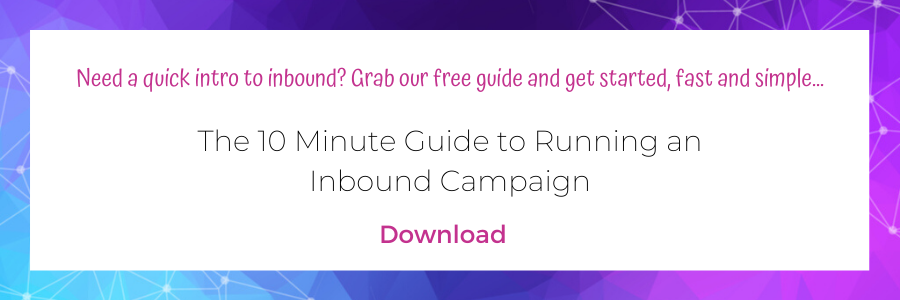Social media as we know plays an important role in digital marketing. Whether you’re selling services or products, platforms such as Facebook, Twitter, Instagram, and YouTube, among others, help businesses establish a brand. And social media is a cost-effective marketing tool. It allows you to directly engage with your customers and sometimes, they’ll do the marketing for you with the right content.
From SMEs to giant companies, you can utilise social media to attract and engage with your target audience. But, for business to business brands, it’s a different ball game, albeit on the same playing field.
Although B2B brands have a different approach to marketing, it can’t be ignored that the best practices will still apply. Be it email marketing or direct sales, those strategies will always be relevant. In the same vein, social media marketing for business to business brands can also play a crucial role.
Choosing the right platform for your business
The first step in using social media as a tool for your business is to consider which platform would be most effective.
Ideally, you need to take into account your target market What platforms do your audience spend their time on? Just because you’re looking for a B2B connection, doesn’t mean that LinkedIn is the only option—although it is the most likely and most prevalent.
Research your audience and their needs, wants, likes, and issues. Where do they go find solutions? Where do they go let off steam? You need to be where they are.
You should also consider what content you can produce. For example, some business have amazing images – so Instagram makes perfect sense. Others have visually less striking business (for example, digital marketing and tech), but can create great videos, so YouTube is a better option.
Tone of voice: social media versus website content
Another factor that brands must consider is the tone of your marketing when it comes to social media. When you’re writing on your website, —you’d use the business’ official tone of voice, and the same can be used on their social media, with a bit of blending.
Of course, in your website content, you might use different styles of writing - a text-heavy page, a lengthier blog post, or short and snappy landing pages.
But when it comes to social media, the primary rule is to engage. That means you’ll need to use an engaging tone – which may be less formal than your usual content. This can be done by using more concise text, some easier images, or even short videos highlighting what you wish to promote.
However, you need to keep in mind that you should still remain professional, despite being on a more laid-back channel. You’re connecting to another business owner or brand on a professional level, and you still need to maintain your brand’s identity.
Generating engagement
Once you’ve chosen the social media platforms you’ll be using and have set your tone to fit the channel, the next phase would be to generate engagement on that platform.
This can be done in a variety of ways-- and identifying your target market is still the crucial criteria. In order to engage your clients, it won’t be as simple as sharing your own content or curating those of others (but these will help, as will be explained further below!). Unlike the content of your own website, where you’ve established your authority in your industry, in order to engage traffic on social media, you need to be creative!
If you’re in the design business, looking to network to businesses needing graphics or videos, you can publish content with eye-catching images or engaging videos. If you’re a digital marketing agency, a healthy discussion on their current digital marketing strategies or research findings may start a lengthier discussion and create interest.
But engagement is not only limited to discussions on your page and posts, per se - it can also be done with providing relevant content applicable across a number of niches.
Content Promotion
Another way to utilise social media is to market your existing content, which can be an opportunity to drive traffic into your brand’s website. Posting links to your latest articles, pages, and blog posts can increase their reach beyond your organic traffic. In fact, that's on the blog post publishing checklist.
People who haven’t discovered your website yet will eventually get familiar with it-- and you create a platform where you can easily connect with those who gained interest through the social media platform.
Also, doing this allows you to re-introduce your evergreen content - any content that’s relevant for many months (or even years) can be re-shared at regular intervals, finding a new audience and amplifying its reach further.
Content Curation
As with every marketing effort, the purpose is to build brand authority and ultimately to connect with possible customers to close a sale. In the case of B2B, networking through social media is not as simple as sharing your own content, which can start to feel like you’re using the platform simply to broadcast your own message.
Content curation does the trick, by sharing the content of other potential customers or brands. It’s a way of recognising the other business’ authority on that subject matter while likewise highlighting your own understanding of your industry and your audience’s needs. And eventually, the other business might even do the same for you, so it’s technically a win-win situation for both! Both of you publish content on your respective platform and content of both gets recognition from a different audience.
Frequency of posts
Though one platform may be more effective than the others, it wouldn’t hurt to use more than one or two, so long as they are cost-effective/time-effective and deliver results. That being said, the use of different platforms also introduces another factor which may be considered when publishing your posts: the frequency.
The thing with social media is that it can be very saturated with content very fast. And if one business brand is churning out a social media post every hour, the audience might be frustrated with the same type of content coming from the same brand, flooding their feed.
That’s why it’s important that brands must consider quality over quantity, even with their social media posts. So long as the content provides value that your audience would want to see, they’ll do the job of increasing viewers for your published post.
However, too little is as problematic as too much – if you’re rarely present on social media, you’ll get forgotten on that platform very quickly. You need to continue to post in order to build up and maintain an audience. It’s also true that most of your posts will only be seen by a small fraction of your audience, so don’t shy away from posting.
On Twitter, as everything moves so quickly, 3-8 posts a day is in the right ballpark, while a post of two on LinkedIn or Facebook is a good benchmark.
Trending topics -- should you jump in?
It’s a no-brainer that jumping into trends would most likely increase your viewing audience or the traffic coming in to your website. But as the old adage goes, it’s still quality over quantity. By jumping into a trending topic, you must still consider those topics that will attract your target market.
Take a look at what the story is behind each trending topic. A hashtag that seems benign may actually have origins in something you wouldn’t want your business to be associated with, whether it’s inappropriate or insensitive.
Think carefully about jumping on sensitive topics, because it’s much easier to fail than to create something that’s genuinely relevant or appropriate.
If you’re jumping into every trending topic, you might end up creating low-quality posts or completely nonsensical posts, which will practically drown out the content your target market needs to see.
Lastly, the worse-case scenario would be that your business would simply be branded as a bandwaggoner, simply for irrelevant attention.
To guide you on what to do and what to avoid when it comes to trending topics, here’s a couple of questions you should ask yourself:
- Is it relevant to your industry?
- Will it attract the right traffic?
- Can you relate it to their brand?
- Will it help your brand?
By using social media as another marketing channel, business to business brands can easily reach your audience and a targeted demographic more suitable to your customer personas. It’s a way to establish your brand’s voice, network to potential customers, engage more closely, and promote your other content.
If you’re a business owner struggling to get their brand on social media or would want a professional digital marketing agency do the work for you, we’re here to get your business noticed.








